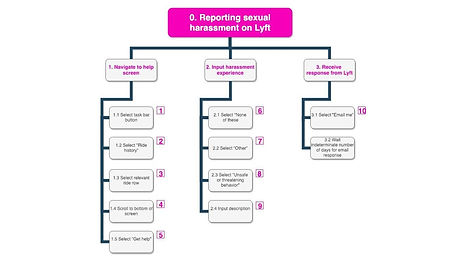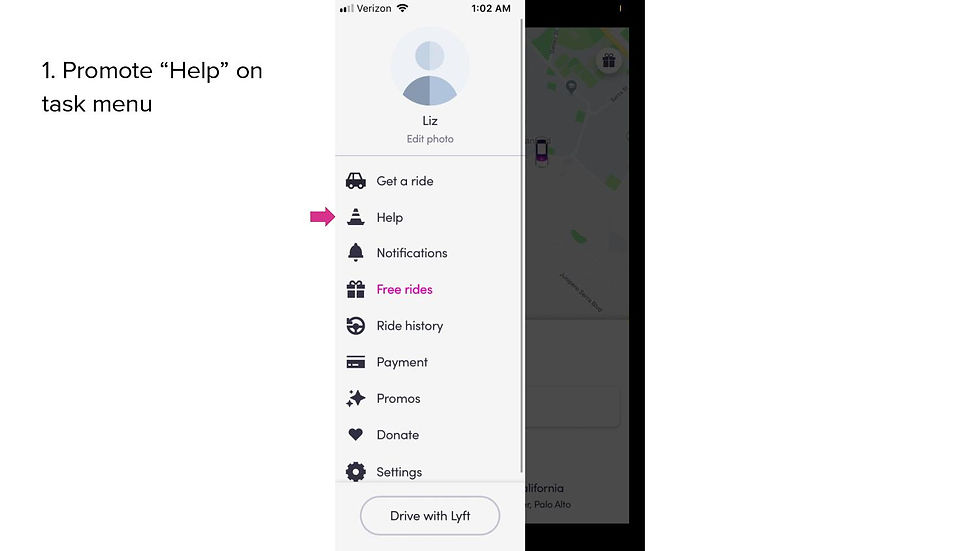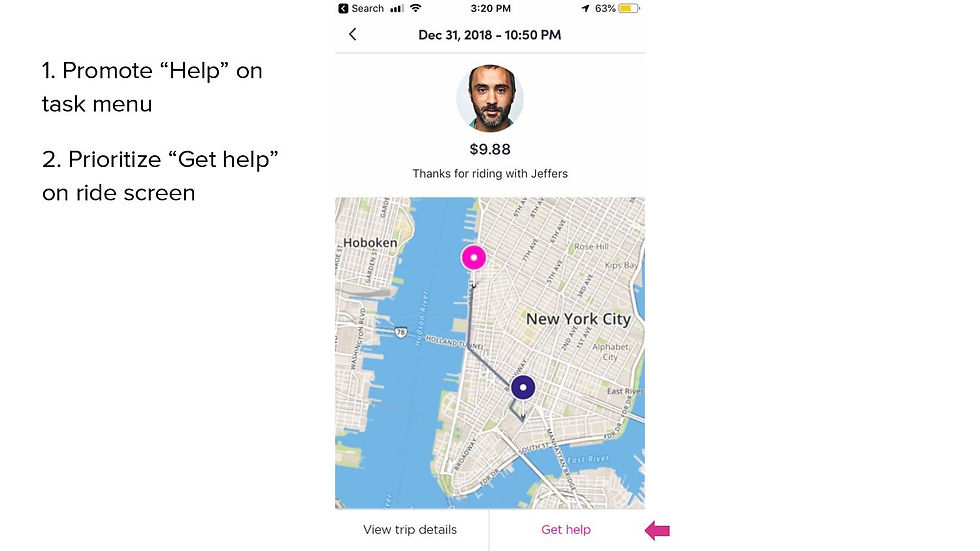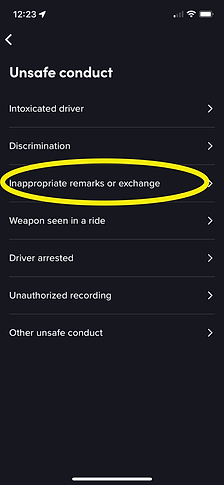Lyft "Take Back the Ride" Campagin
In the fall of 2018, rideshare safety advocate Allison Tielking received national attention for her "Take Back the Ride" campaign. As part of this campaign, she collected stories from over 40 women who experienced sexual misconduct in order to pressure popular rideshare companies to better protect female riders. In January 2019, she brought me in as a Product Design Consultant, and I co-presented with her in front of the Lyft C-Suite at their headquarters in San Francisco. All figures on this page are samples of the slides that I personally created and presented.
Problem
To understand the problem, I read the stories Allison collected, organizing them by UX/UI implications; recruited and observed five participants completing the task of reporting sexual misconduct on the Lyft mobile app; and performed my own app audits of Lyft versus Uber. I determined that the superfluous number of steps, impersonal/unpredictable follow-up, inexact wording ("The app was actually really not explicit with its language") was obstructing, confusing, and emotionally invalidating in the sensitive aftermath of an incident.
-page-028.jpg)
Task analysis of reporting sexual harassment on the Lyft mobile app, January 2019
-page-015.jpg)
Sample slide of Lyft vs. Uber comparison
Simplifying the Reporting Process in the Aftermath
I designed mockups of my design directions to simplify the reporting process, with a focus on reducing the number of steps and using clearer language. Directions included suggestions for immediate support and options for follow-up communication from Lyft.




Design directions for simplifying the reporting process after a ride
Providing Clear Options During and Immediately After
I highlighted opportunities to enhance safety while a ride was currently in progress and upon completion. Suggestions included options for immediate support and reporting.
-page-057.jpg)
Left: current Lyft in-ride design | Right: My proposed in-ride design directions
-page-056.jpg)
Left: current Lyft in-ride design | Right: My proposed post-ride design directions
Results
After the presentation, Lyft created a new safety team dedicated to addressing this particular subject matter. Below are screenshots of the current app (as of June 2024) as it pertains to reporting sexual misconduct after a ride is complete. The flow has fewer steps, includes more specific language, provides suggestions for immediate support, and includes options for follow-up communication from Lyft.




Screenshots of the report flow on Lyft's mobile app, as of June 2024